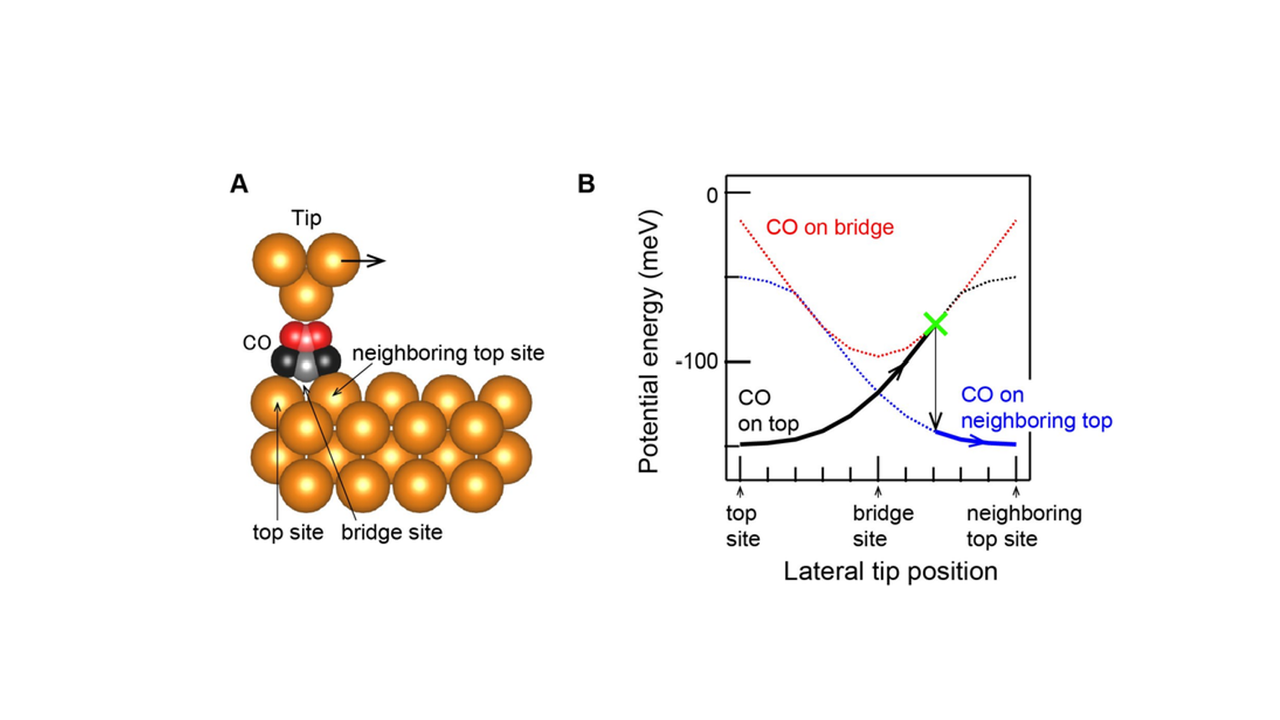Why does it get hot when you rub things together? Unraveling the mystery of dynamic friction at the atomic level

Friction, an everyday phenomenon, has perplexed scientists for centuries. Though extensively researched, our understanding remains fragmented, primarily due to the multifaceted interactions that span across varying scales. Achieving an accurate grasp of the precise contact conditions between objects has been a longstanding challenge, a feat recently made possible through advancements in scanning probe microscopy.
Yet, even with these technological breakthroughs, the intricacies of dynamic friction – the force needed to maintain the movement of a molecule – have remained elusive. While scientists could measure static friction by moving a single molecule on a surface, both the measurement and theoretical understanding of dynamic friction have yet to be fully unveiled.
Now, writing in Physical Review Letters and Physical Review B, a collaborative team from Kanazawa University (Japan), the University of Regensburg (Germany) and DIPC report their groundbreaking study that dives deep into this challenge. They meticulously examined the manipulation of a carbon monoxide (CO) molecule on a single-crystal copper surface using an atomic force microscope. Backed by ab initio calculations, their findings shed light on how the CO molecule positions relative to the microscope tip and surface, and the relationship between molecule positioning, energy dissipation, and both static and dynamic friction.
“This journey into the atomic intricacies of friction has been both challenging and enlightening. Our discovery of an unexpected intermediate state reshapes our foundational understanding. Imagine a surface not as completely flat at the atomic scale, but more like a billiard table where the balls are closely packed together. Normally, the molecule sits comfortably atop a single ball. But when pushed across this 'table', instead of hopping directly from one ball to the next, we found that the molecule sometimes takes a surprising detour, momentarily positioning itself between two balls. This unexpected 'stopover' challenges our previous understanding of how the molecule moves and provides crucial insights into the detailed mechanics of friction." explains Prof. Frederiksen.
This research stands out for its unequivocal clarity on the friction process. Not only does it provide fresh insights into a long-studied phenomenon, but it also paves the way for future studies on energy dissipation relaxation processes.
Both papers were simultaneously published on October 2, 2023:
Dynamic friction unraveled by observing an unexpected intermediate state in controlled molecular manipulation. Norio Okabayashi, Thomas Frederiksen, Alexander Liebig, and Franz J. Giessibl. Phys. Rev. Lett. 131 (2023).
Energy dissipation of a carbon manoxide molecule manipulated using a metalic tip on copper surfaces. Norio Okabayashi, Thomas Frederiksen, Alexander Liebig, and Franz J. Giessibl. Phys. Rev. Lett. 108 (2023).
